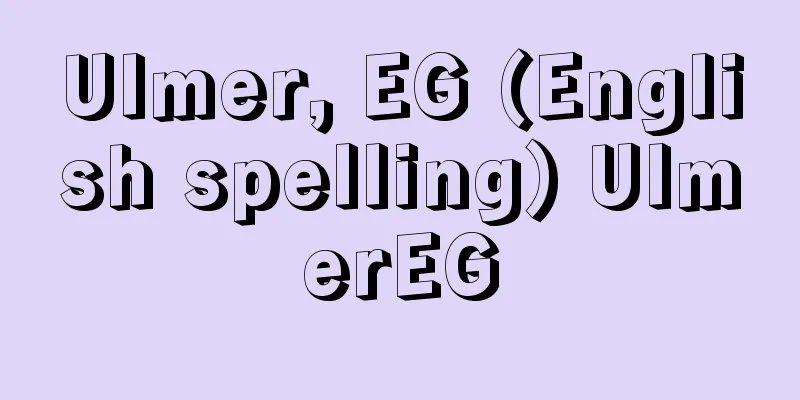John Maynard Keynes

|
A leading British economist of the 20th century. Born in Cambridge on June 5th. His father was a lecturer in economics and logic at Cambridge University, and later worked in school administration. His mother was once Mayor of Cambridge. After graduating from Eton College, he entered King's College, Cambridge. There he joined the student group "The Society" and was influenced by the ideas of the young ethicist G. E. Moore. He graduated from college in 1905, passed the civil service examination the following year, and worked at the India Office until 1908. Thanks to the efforts of A. Marshall, he returned to Cambridge in the same year, and in 1909 he became a fellow of King's College, where he was in charge of monetary theory. In 1911 he became editor of the Economic Journal, a position he held for the next 33 years. He served at the Ministry of Finance from 1915 to 1919, and was the Principal Representative of the Ministry of Finance and Acting Chancellor of the Exchequer at the Paris Peace Conference, but resigned in opposition to the Allied demands for reparations for Germany, and published his own argument under the title The Economic Consequences of the Peace (1919). Regarding the issue of Britain's return to the gold standard from 1923 to 1925, he wrote A Tract on Monetary Reform (1923), in which he opposed the gold standard and argued for a managed currency system. However, when Britain returned to the gold standard in 1925, which resulted in a depression and unemployment, he published The Economic Consequences of Mr. Churchill (1925), criticizing the Conservative Party's policies and laissez-faire, and wrote a series of pamphlets, including Am I a Liberal? (1925) and The End of Laissez Faire (1926), aimed at supporting and reforming the Liberal Party (these essays were collected in Essays in Persuasion , published in 1931). He then wrote A Treatise on Money (1930), and served as a member of the Macmillan Committee, which discussed Britain's financial and unemployment problems during the Great Depression. In his debates with A.C. Pigou, he increasingly questioned Marshallian neoclassical economics, and in 1936 published his major work , The General Theory of Employment, Interest and Money, which had such a major impact on the history of economics that it is called the "Keynesian Revolution." During World War II, he served as an advisor to the Chancellor of the Exchequer and a member of the board of the Bank of England, and was made a peer in 1942. In 1944, he attended the Bretton Woods Allied Monetary Conference to deal with post-war world economic and financial problems, where he presented the "Keynes Plan," but it was defeated by the American "White Plan." In 1945, he became president of the International Monetary Fund and the International Bank for Reconstruction and Development. He died of a heart attack at his villa in Tilton, Sussex, on April 21, 1946, aged 62. Keynes' contribution to the history of economics was, first and foremost, his identification of the causes of recessions and unemployment and his presentation of a theory for overcoming them in "The General Theory." He demonstrated that economic equilibrium under underemployment, which was not assumed in conventional economics, is possible even with unemployment when there is a lack of effective demand, and argued that instead of laissez-faire, the government should actively intervene in the economy. He rejected Say's Law, which was implicitly assumed in conventional economics, and presented the theory of effective demand, which states that the size of output and the level of employment are determined by the size of effective demand, which consists of investment and consumption. He also presented the multiplier theory, which analyzed that when the amount of investment increases, income or output increases by several times the amount of the increase, and the liquidity preference theory, which states that the interest rate is not determined at the point where investment and savings are equal, but is determined in relation to whether assets are held in the form of cash or in the form of bonds or securities. From the above analysis, he argued that in order to increase output and eliminate unemployment, interest rates should be lowered through open market policies to increase private investment, that the government should promote direct investment, and that income equalization policies through inheritance taxes and progressive taxation should be implemented to increase consumer demand.In this way, Keynes's economics supported active government intervention in the economy instead of a laissez-faire economy, and provided a theoretical basis for modified capitalism, while his income equalization policies through taxes and full employment policies were also oriented toward a welfare state. Keynes was not an economist in the narrow sense, but a man of action who made active political statements on the "problems of the time." He was also an ardent supporter of the Liberal Party, criticizing the Conservative Party, reforming the Liberal Party, and moderating the Labour Party. Ideologically, he was influenced by Moore in his youth, criticizing utilitarianism and advocating intellectualism, and formed the Bloomsbury Group with artists such as L. Strachey and V. Woolf. He also served as editor-in-chief of The Nation and The New Statesman and Nation, director of the National Mutual Life Society, director of the National Gallery, and president of the Society for the Encouragement of Music. His wife was the Russian ballerina Lydia Lopokova. [Tatsuya Nakamura] "The Complete Works of Keynes, edited by the Royal Economic Society, 30 volumes (1976-, Toyo Keizai Shinposha)" ▽ "Keynes, by Ito Mitsuharu (Iwanami Shinsho)" ▽ "Keynes, by Hayasaka Tadashi (Chuko Shinsho)" ▽ "Keynes, by Ito Mitsuharu (1983, Kodansha)" ▽ "Keynesian Economics, edited by Asano Eiichi (1973, Yuhikaku)" [References] | | |Source: Shogakukan Encyclopedia Nipponica About Encyclopedia Nipponica Information | Legend |
|
20世紀を代表するイギリスの経済学者。6月5日ケンブリッジに生まれる。父はケンブリッジ大学の経済学および論理学の講師で、のちに学校行政にも携わった。母はケンブリッジ市長を務めたこともある。イートン校を卒業後、ケンブリッジ大学のキングズ・カレッジに入学。そこで学生グループ「ザ・ソサエティ」に加わり、若き倫理学者G・E・ムーアの思想的影響を受けた。1905年、大学を卒業、翌年文官試験に合格し、08年までインド省に勤務した。同年A・マーシャルの努力によってケンブリッジに戻り、09年キングズ・カレッジのフェローとなり、金融論を担当した。また11年には『エコノミック・ジャーナル』の編集者となり、以後33年間この任にあった。15年から19年まで大蔵省に勤務し、パリ講和会議には大蔵省主席代表、大蔵大臣代理となったが、連合国の対独賠償要求に反対して辞任、自らの主張を『平和の経済的帰結』The Economic Consequences of the Peace(1919)と題して公刊した。23年から25年にかけてのイギリスの金本位制復帰問題に関しては、『貨幣改革論』A Tract on Monetary Reform(1923)を著し、金本位制に反対して管理通貨制を主張した。しかし、25年イギリスが金本位制に復帰し、その結果不況と失業にみまわれると、『チャーチル氏の経済的帰結』The Economic Consequences of Mr. Churchill(1925)を発表して保守党の政策と自由放任主義を批判し、また自由党の支持と改革を目的とした『私は自由主義者か』Am I a Liberal?(1925)、『自由放任の終焉(しゅうえん)』The End of Laissez Faire(1926)などの一連のパンフレットを著した(これらの諸論文は31年に刊行された『説得評論集』Essays in Persuasionに収められている)。ついで『貨幣論』A Treatise on Money(1930)を著し、またマクミラン委員会委員となって、大恐慌下のイギリスの金融と失業問題を論じた。そして、A・C・ピグーとの論争のなかでマーシャル的な新古典派経済学への疑問を強め、36年に主著『雇用・利子および貨幣の一般理論』The General Theory of Employment, Interest and Moneyを発表し、経済学史上「ケインズ革命」とよばれるほどの大きな影響を与えた。第二次世界大戦中は大蔵大臣顧問、イングランド銀行理事の地位にあり、42年には貴族に叙せられた。また44年、戦後の世界経済と金融問題の処理のためのブレトン・ウッズ連合国通貨会議に出席して「ケインズ案」を提示したが、アメリカの「ホワイト案」に敗れた。45年、国際通貨基金と国際復興開発銀行総裁に就任。46年4月21日サセックス州ティルトンの別荘で心臓麻痺(まひ)のため死去、62歳。 ケインズの経済学史上の寄与は、なによりもまず、『一般理論』において、不況と失業の原因を究明し、それを克服するための理論を提示した点にある。彼は、従来の経済学が想定していなかった不完全雇用下の均衡、すなわち、有効需要が不足している場合には、失業が存在したままでの経済均衡がありうることを論証し、自由放任にかわって、政府が積極的に経済に介入すべきことを主張した。従来の経済学が暗黙のうちに想定していたセーの法則を否定し、産出量の大きさおよび雇用の水準は、投資と消費からなる有効需要の大きさによって決まるとする有効需要論を示した。また投資の量が増加すると、その増加分の何倍かの所得ないし産出量が増加することを分析した乗数理論、利子率は投資と貯蓄が相等しい点で決まるのではなく、資産を現金の形で保有するか債券や証券の形で保有するかに関連して決まるとする流動性選好説を提示した。以上の分析から、彼は、産出量を増加させて失業をなくすためには、公開市場政策などによって利子率を引き下げて民間投資を増加させること、政府が直接投資を推進すること、消費需要を増加させるために、遺産相続税と累進課税による所得平等化政策を実施することなどを主張した。このように、ケインズの経済学は、自由放任の経済にかわって、政府の経済への積極的介入を支持し、修正資本主義の理論的根拠を与えるとともに、租税による所得平等化政策と完全雇用政策は、福祉国家を指向するものでもあった。 ケインズは狭い意味での経済学者ではなく、「時代の問題」に対して積極的に政治的発言を行う行動の人であった。彼はまた熱心な自由党支持者であり、保守党への批判、自由党の革新、労働党の穏健化を主張した。思想的には、青年時代にムーアの影響を受け、功利主義批判と知性主義を主張するとともに、L・ストレーチー、V・ウルフなどの芸術家たちとブルームズベリー・グループを形成した。また、『ネーション』『ニュー・ステーツマン・アンド・ネーション』の主筆、国民相互生命協会の理事、国立美術館理事、音楽奨励協会の会長なども歴任した。なお、夫人はロシア人バレリーナ、リディア・ロポコワであった。 [中村達也] 『イギリス王立経済学会編『ケインズ全集』全30巻(1976~ ・東洋経済新報社)』▽『伊東光晴著『ケインズ』(岩波新書)』▽『早坂忠著『ケインズ』(中公新書)』▽『伊東光晴著『ケインズ』(1983・講談社)』▽『浅野栄一編『ケインズ経済学』(1973・有斐閣)』 [参照項目] | | |出典 小学館 日本大百科全書(ニッポニカ)日本大百科全書(ニッポニカ)について 情報 | 凡例 |
<<: Keynesian school of economics
Recommend
Air-sea interaction
Interaction between the atmosphere and the ocean. ...
Image (in English)
From the Latin imago (image). It means mental imag...
Yoshinari Ashikaga
...The 8th Shogun of the Muromachi Shogunate. In ...
Kii Continued Topography - Kii Continued Topography
This is a geography book of the Kii Domain at the...
Lacertidae
…A general term for lizards belonging to the Lace...
Koganei [city] - Koganei
A city in central Tokyo. It was incorporated as a ...
growth chamber
…Phyton is the Greek word for plant, and tron m...
Polar Urals
The Ural Mountains begin in the north on the Arct...
sexuality
…Sexual drive is a primary drive with a physical ...
bilateral trade
...When trying to balance the trade balance betwe...
Shaw, Robert
Born: August 9, 1927, Westhoughton, England [Died]...
Tubers - tubers
A branched underground stem of a plant that swell...
diarrhea
Concept Diarrhea was the most important symptom al...
Precocious puberty
What is the disease? This is a disease in which t...
Paraphasia - Paraphasia
A symptom seen in aphasia, which refers to the phe...









